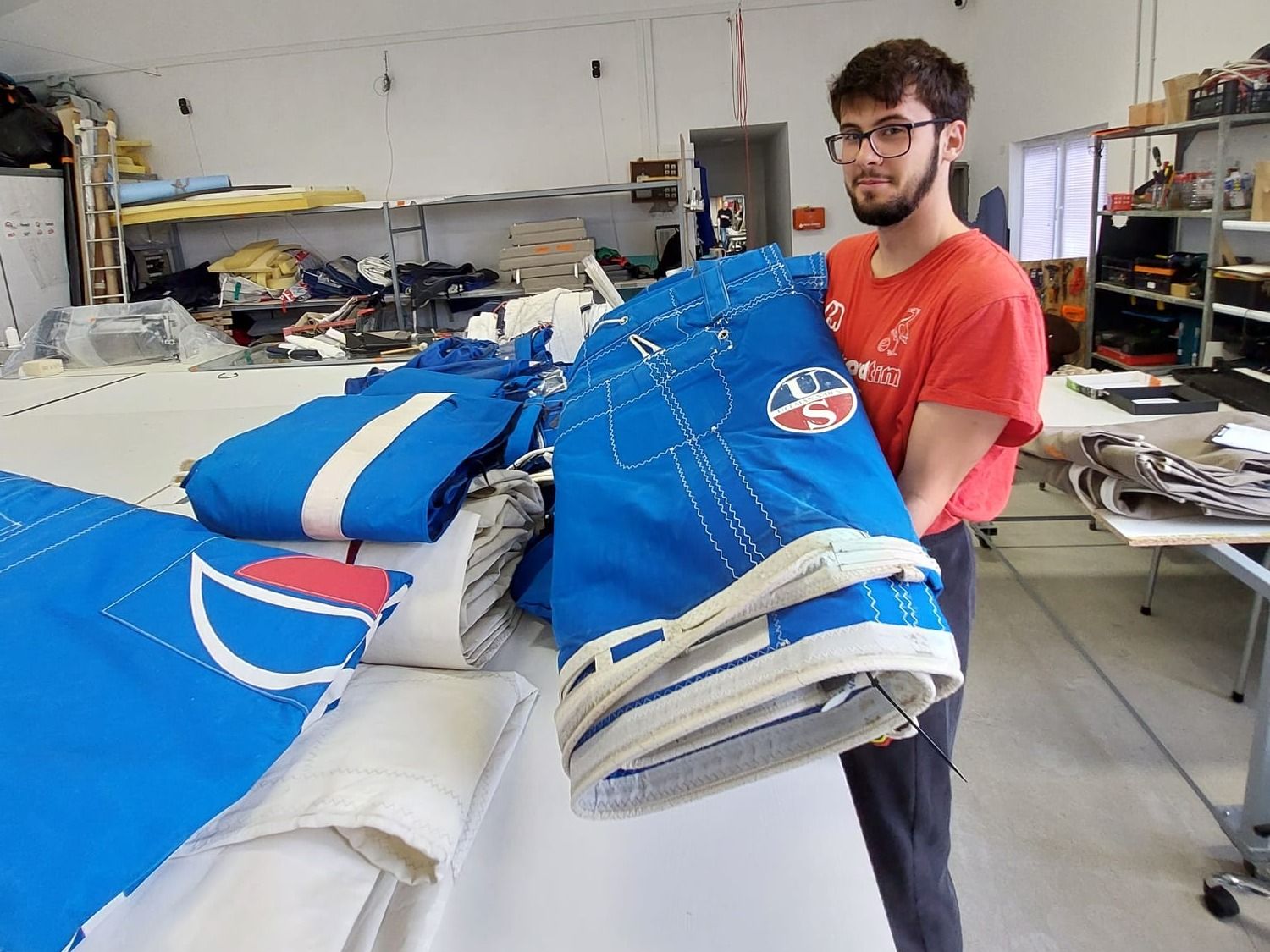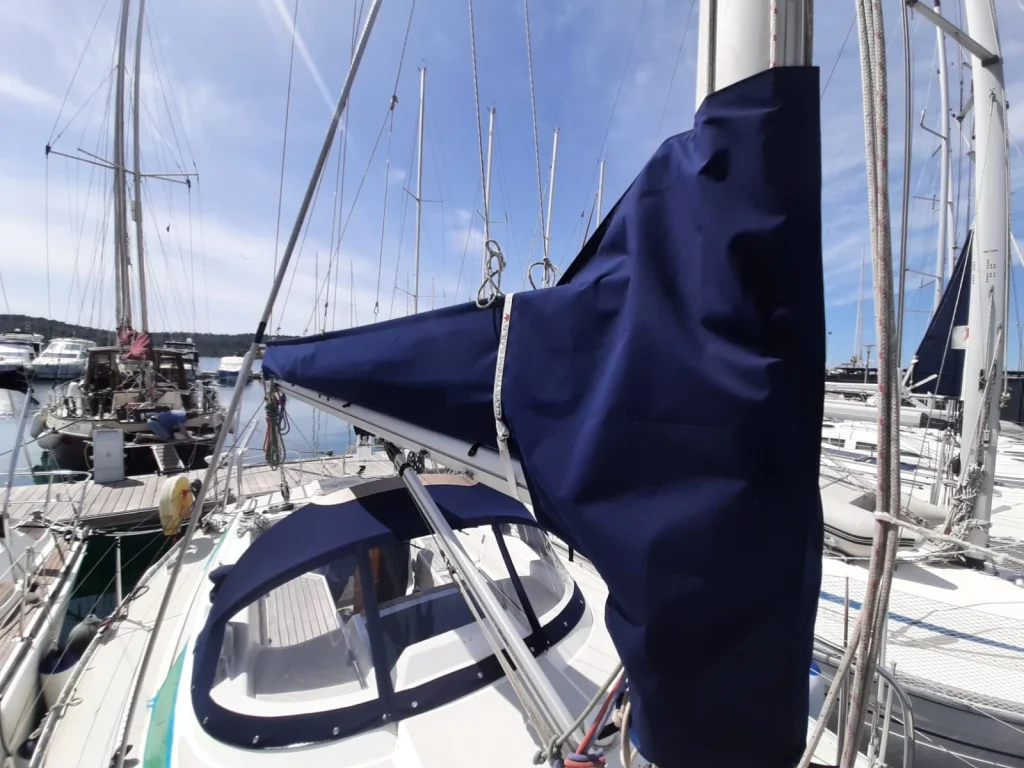Lazy bags: the key to organizing and protecting Your sails
Lazy bags—often called stack packs—are a simple upgrade that pays off every single time you hoist or drop the main. They streamline sail handling, protect expensive sailcloth from UV and abrasion, and keep the boom area neat and safe.
When specified and fitted correctly, a lazy bag reduces wear, speeds up reefing, and extends the service life of your mainsail.
What a Lazy Bag Actually Does
- One-person sail handling: The bag and its integrated lazy jacks guide the mainsail neatly onto the boom during drops or reefs—no scrambling on deck.
- UV & weather protection: A zipped or flap-over top encloses the sail, shielding it from sun, salt, and wind-flogging.
- Tidy deck, safer crew: Fewer loose ties and flapping panels around the boom; clearer visibility and less trip hazard.
- Less wear: Controlled flaking minimizes hard creases and chafe points, preserving lamination and stitching.
Note: Lazy bags pair best with conventional, battened mainsails. They are not used with in-mast or in-boom furling systems.

Materials that survive real marine conditions
A lazy bag lives where UV, salt, and motion are relentless. Choose components that last:
- Canopy fabric: Solution-dyed acrylic (marine-grade) or high-tenacity polyester canvas for UV, colorfastness, and mildew resistance.
- Thread: PTFE (e.g., Tenara®) or bonded polyester for UV-stable seams.
- Zippers & hardware: Marine VISLON® zippers, stainless-steel D-rings/saddles, anodized aluminum fittings.
- Reinforcements: Chafe patches at spreader contact zones, mast collar, and topping-lift area.
- Ventilation & drainage: Mesh panels or eyelets along the bag bottom to let water escape and air circulate.
Fit & design features that matter
A lazy bag should look integrated—because it is built to the geometry of your rig.
- Boom length & girth:
Measured clew to gooseneck with allowance for leech roach and full battens. - Mast interface:
A shaped collar or zip/Velcro wrap around the mast to prevent water ingress and chafe. - Top closure:
Full-length zip with a protective storm flap, or overlapping velcro flap for glove-friendly use. - Lazy jacks:
Multi-leg layout with adjustable cleats; exit blocks positioned to avoid chafe on the leech. - Reefing compatibility:
Clear access to reef cringles, color-coded slots or zips at reef points, and internal tie-offs. - Aesthetics:
Color-matched to canvas work (sprayhood/bimini), optional contrast piping, vessel name embroidery.

Aerodynamics note: The bag’s side height should be sized so it doesn’t foul the mainsail leech when sheeted hard; correct batten pocket placement helps the sail drop cleanly without snagging.
Common mistakes to avoid
- Bag sized too low/high, interfering with the leech under load.
- No drainage/ventilation, inviting mildew.
- Over-tight lazy jacks that saw at the sail leech while sailing.
- Using household zippers or non-UV thread that fail early.
The Rempar Sailing Approach
At Rempar Sailing d.o.o., we design and build custom lazy bags tailored to your rig and sailing style:
- Precision on-board measurement and CAD templating
- Marine-grade canvas, PTFE thread, YKK VISLON® zips, and stainless fittings
- Optimized lazy-jack geometry for clean drops and minimal chafe
- Reef-access zips, mast collar sealing, and matched colorways to your bimini/dodger
- Professional installation and a care guide for long-term performance
Outcome: faster, cleaner mainsail handling and real protection for your sail investment—delivered in a package that looks as good as it works.


